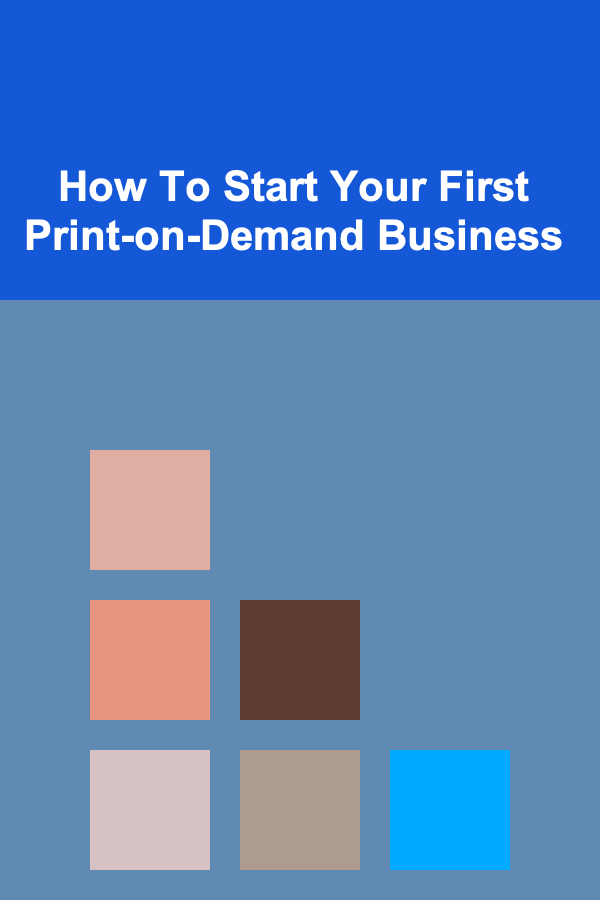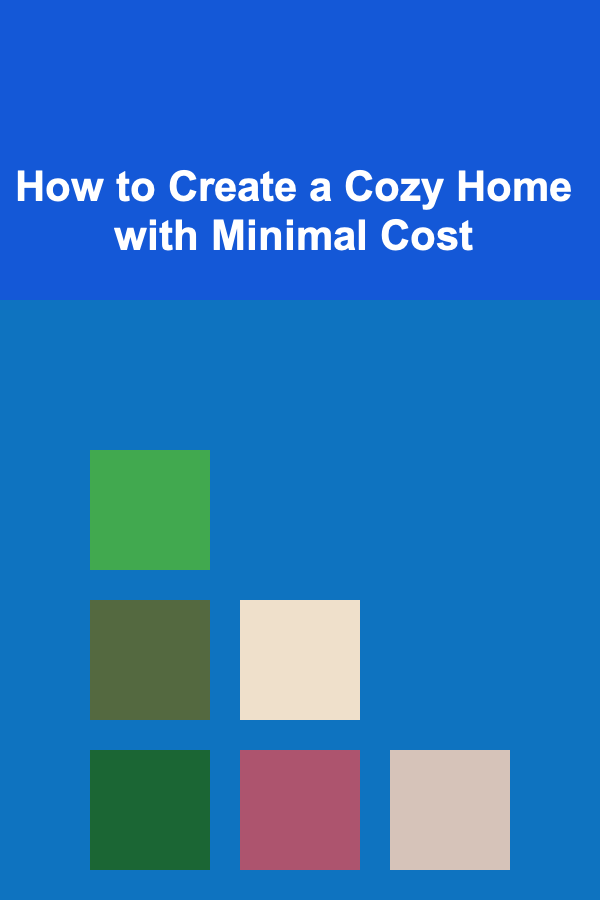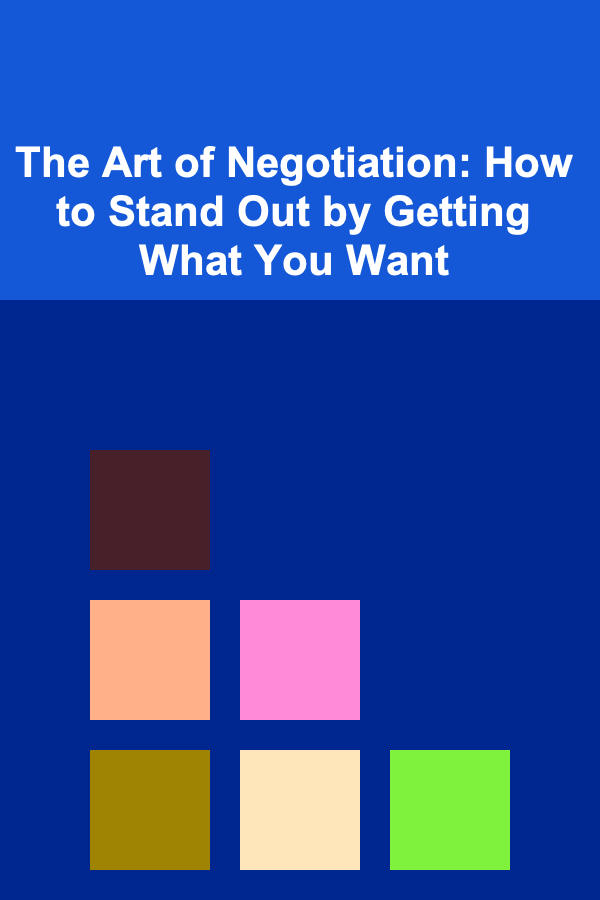
How To Start Your First Print-on-Demand Business
ebook include PDF & Audio bundle (Micro Guide)
$12.99$5.99
Limited Time Offer! Order within the next:

Starting a print-on-demand (POD) business is an exciting venture that combines creativity with entrepreneurship. POD allows you to design products and have them printed and shipped on-demand, without the need for inventory. It's a great way for artists, designers, or anyone with a creative mind to launch an eCommerce business with relatively low upfront costs. This article will guide you step-by-step through how to start your first print-on-demand business, covering everything from market research and product selection to marketing strategies and scaling.
Understanding Print-on-Demand
Before diving into the practical steps of setting up your POD business, it's important to understand what print-on-demand is and how it works. Essentially, POD is a fulfillment model where products are only printed when a customer places an order. This eliminates the need for inventory and reduces the risks associated with unsold stock.
The beauty of POD is that you can design a wide range of products, from T-shirts and hoodies to mugs, posters, and phone cases, all without ever touching the product yourself. The POD provider handles the printing, packaging, and shipping, while you focus on marketing and growing your brand.
Choose a Niche
The first step in starting your POD business is choosing a niche. A niche is essentially a specific market segment with a particular interest or demand for products. Picking the right niche is critical to your business's success, as it helps you target a specific group of people and stand out in a crowded marketplace.
Why Niche Matters
When you focus on a niche, you can create more tailored and personalized products that appeal to a specific audience. A niche allows you to refine your marketing efforts and create a brand identity that resonates with potential customers. Additionally, it's easier to build a loyal customer base when you cater to a particular interest.
How to Choose Your Niche
Here are some tips to help you select a profitable niche for your POD business:
- Passion and Interest: Choose a niche you are passionate about or have knowledge in. This will make the process of designing and marketing products much easier and more enjoyable.
- Market Demand: Research whether there is demand for the products you want to sell. Use tools like Google Trends, social media platforms, and marketplaces to analyze trends and customer interests.
- Profitability: Ensure that the niche is profitable. A profitable niche usually has a balance between demand and competition. You want a niche that has enough customers, but not so much competition that it's difficult to stand out.
- Target Audience: Define who your ideal customers are. Age, gender, location, and lifestyle can all influence what products you should offer.
Select a POD Platform
Once you've chosen your niche, the next step is selecting a print-on-demand platform. The platform you choose will play a huge role in the quality of your products, fulfillment times, and your overall customer experience. There are several POD platforms available, each with its own features and benefits. Some of the most popular platforms include:
- Printful: Printful is one of the largest POD platforms and offers a wide range of products, including apparel, accessories, and home goods. It integrates seamlessly with most eCommerce platforms like Shopify, Etsy, and WooCommerce.
- TeeSpring: TeeSpring specializes in apparel and is easy to use, making it a great option for beginners. It's especially good if you want to focus on T-shirts, hoodies, and mugs.
- Printify: Printify offers a wide range of products and has a large network of printing partners, which allows for global shipping. It's highly customizable and integrates with popular eCommerce platforms.
- Gooten: Gooten is another print-on-demand platform with a variety of products. They focus on creating high-quality products and offer a solid API for developers.
When selecting a POD platform, consider the following factors:
- Product Variety: Does the platform offer the types of products you want to sell? Ensure that it has the products your niche will love.
- Pricing: Compare pricing structures. Some platforms have a base price for each product, and you'll add a markup to set your retail price. Make sure the pricing allows you to make a reasonable profit.
- Shipping Times: Delivery times are crucial to customer satisfaction. Choose a platform with fast and reliable shipping, especially if you're targeting an international audience.
- Integrations: Check if the platform integrates with your chosen eCommerce platform, such as Shopify, Etsy, or WooCommerce.
Design Your Products
Once you've selected your POD platform, it's time to create your designs. The design phase is where your creativity shines, and it's also the most critical part of your business. Your designs will directly influence the appeal of your products and your ability to stand out in a competitive market.
Design Tips for Success
- Know Your Audience: Tailor your designs to the preferences of your target audience. Understand the style, colors, and themes that resonate with them.
- Keep It Simple: Simple and bold designs often work best, especially on products like T-shirts and mugs. Avoid overly complex designs that might be difficult to print.
- Use Professional Tools: While there are many free design tools like Canva, it's best to use professional tools like Adobe Illustrator or Photoshop for high-quality designs. You want to ensure that your designs are print-ready and look good on a variety of products.
- Consider Trends: Stay updated on current trends in your niche and use them to inspire your designs. However, don't simply copy others---make your designs unique.
- Test Your Designs: Before launching, order samples of your products to ensure that the designs look good in real life. Check the print quality, colors, and overall finish.
Where to Find Design Inspiration
- Pinterest: A goldmine for creative ideas and design inspiration.
- Instagram: Look for trending designs in your niche by exploring popular hashtags.
- Design Communities: Websites like Dribbble, Behance, and 99designs feature work from professional designers.
- Competitor Research: Analyze your competitors' designs to identify gaps in the market or areas where you can innovate.
Set Up Your Online Store
The next step is setting up your online store, where you'll showcase and sell your POD products. While the POD platform takes care of the production and shipping, your store is where the customer experience happens. A well-designed and user-friendly store is essential for converting visitors into buyers.
Choose an eCommerce Platform
To sell your products, you'll need to choose an eCommerce platform. Some popular platforms for POD businesses include:
- Shopify: Shopify is one of the best platforms for POD businesses due to its user-friendly interface and seamless integration with POD providers like Printful and Printify.
- Etsy: Etsy is a great platform if you're targeting a niche market. It's ideal for handmade, vintage, or unique products, and it has a built-in customer base looking for creative designs.
- WooCommerce: If you already have a WordPress site, WooCommerce is a powerful option. It's customizable, and you can integrate it with most POD platforms.
When setting up your store, ensure that:
- The website is easy to navigate: Keep the user interface clean and organized. Categorize your products logically.
- Your branding is consistent: Use your brand's colors, fonts, and logo to create a cohesive experience.
- Product pages are optimized: Include high-quality images, product descriptions, and clear calls to action (CTAs).
Setting Up Payment Methods
You'll need to choose payment gateways to process transactions. Common options include PayPal, Stripe, and Shopify Payments. Make sure to offer a variety of payment options to cater to different customer preferences.
Market Your POD Business
Now that your store is set up, it's time to attract customers. Marketing is a crucial aspect of your POD business, and there are several strategies you can use to drive traffic and increase sales.
Social Media Marketing
Social media platforms are excellent for reaching a broad audience and driving traffic to your store. Some strategies to consider include:
- Instagram: Create a visually appealing Instagram page and showcase your products through high-quality photos, stories, and influencer partnerships.
- Facebook: Build a community around your brand by creating a Facebook page or group where you can engage with your audience.
- TikTok: TikTok's short-form videos are perfect for showcasing your products in a fun and creative way. Leverage trending sounds and challenges to gain exposure.
Paid Advertising
Paid ads can be an effective way to get your products in front of a larger audience. Consider using:
- Facebook Ads: Target specific demographics, interests, and behaviors to reach your ideal customer.
- Google Ads: Use Google search and display ads to capture intent-driven traffic.
- Pinterest Ads: Pinterest is a great platform for visual products like POD items. Promoted pins can help boost visibility.
Content Marketing
Content marketing involves creating valuable content to attract and engage your target audience. Consider starting a blog or a YouTube channel where you can share tips, tutorials, and behind-the-scenes looks at your design process.
Influencer Marketing
Partnering with influencers in your niche can be an excellent way to increase brand awareness and drive sales. Look for influencers with an engaged audience who align with your brand values.
Analyze and Scale Your Business
After launching your POD business, it's important to monitor your performance and make data-driven decisions. Use tools like Google Analytics, social media insights, and eCommerce platform analytics to track key metrics such as traffic, conversions, and customer behavior.
Optimizing for Growth
- Customer Feedback: Regularly ask for feedback from your customers to improve your products and services.
- Product Expansion: Once you've established a customer base, consider expanding your product offerings by introducing new designs or new product categories.
- Marketing Refinement: Continuously test and optimize your marketing strategies. A/B test ads, headlines, and product descriptions to maximize conversion rates.
Conclusion
Starting a print-on-demand business can be a rewarding and profitable venture. By following these steps---choosing a niche, selecting the right POD platform, designing quality products, setting up your store, marketing effectively, and analyzing your performance---you can set yourself up for success. With time, persistence, and creativity, you can grow your POD business into a thriving enterprise.

How to Create a Checklist for Deciding on the Structure of a Partnership
Read More
How to Create a Cozy Home with Minimal Cost
Read More
How to Create a Photo Book Using Online Services
Read More
How to Create a Quiet Home Office for Remote Work
Read More
How to Create a Zen Garden for Peaceful Outdoor Organization
Read More
The Art of Negotiation: How to Stand Out by Getting What You Want
Read MoreOther Products

How to Create a Checklist for Deciding on the Structure of a Partnership
Read More
How to Create a Cozy Home with Minimal Cost
Read More
How to Create a Photo Book Using Online Services
Read More
How to Create a Quiet Home Office for Remote Work
Read More
How to Create a Zen Garden for Peaceful Outdoor Organization
Read More